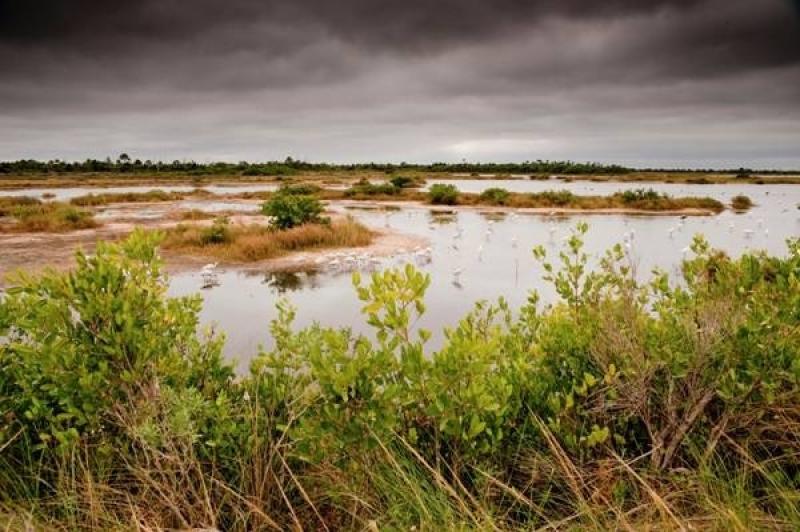
Conserving natural areas and restoring lost coastal habitat are cost-efficient and highly effective contributions to coastal resiliency. Essential fish habitat (EFH) conservation is mandated by the Magnuson-Stevens Fishery Conservation and Management Act. Besides offering ecosystem services, EFH offers resiliency to climate change and sea level rise, and lessens damage from storms, flooding, and other natural disasters.
Tidal and freshwater forested wetlands, marshes, pocosins, mangroves, and living shorelines are known as nature-based or green infrastructure and have the following benefits for coastal resiliency: filter and trap sediments and debris; slow waves and floodwaters; absorb water from rainfall, flooding, and high tides; and vegetation roots hold soils in place. Dunes, vegetation, and trees buffer wind and absorb storm surge and wave energy, reduce erosion, and reduce damage to upland development. Sheltered mooring for vessels can be found in tidal creeks and mangrove-lined inlets.

Natural shorelines, mangroves, and saltmarsh with forested wetlands in the background. Photo credit: NOAA.
Submerged EFH offers coastal resiliency too. Coral reefs, hardbottom, oyster reefs, and sills slow storm surge, waves, and currents – reducing scour and minimizing coastal erosion. Roots and rhizomes of seagrass and beds of macroalgae trap and hold sediments, and the blades and fronds slow currents also allowing sediments to drop from suspension.
Technical assistance and advice on restoration projects is another role HCD plays in coastal resiliency. Restoration projects create an average of 15 jobs for every $1M invested1.
Research indicates green infrastructure such as wetland and reef restoration in the Gulf of Mexico yields an average of $3.50 (in some case greater than $7.00) in direct flood-reduction benefit for every $1.00 spent on restoration, while artificial solutions (building levees, elevating homes, armoring shorelines) cost the same as, or more, than the value of what is protected.
Large-scale oyster and wetland restoration projects in the Gulf of Mexico could help avert more than 45 percent of the risk from climate change over a 20-year period, saving more than $50 billion in flood damages and provide ecosystem services to sustainable fisheries and economic benefits in jobs and recreation2.

Brandon Howard at NOAA sponsored Louisiana marsh restoration project

HCD supervised volunteers planting marsh grasses during the annual Marsh Mania community event. Photo credit: NOAA.
References:
1http://www.noaa.gov/stories/6-things-to-know-about-coastal-habitat-restoration
2https://blog.nature.org/science/2018/04/11/nature-based-solutions-restoration-funding-gulf-of-mexico/?src=social.nature.facebook.main



